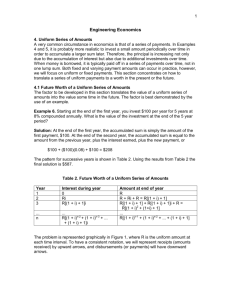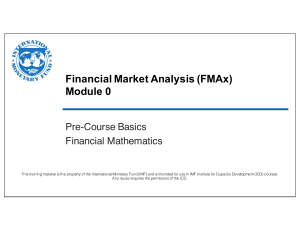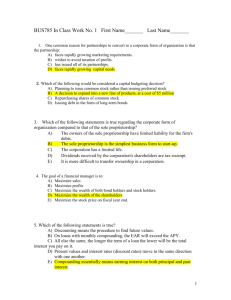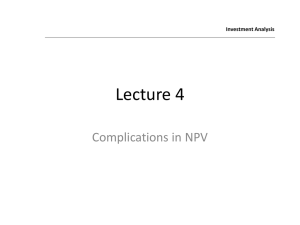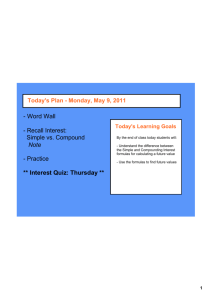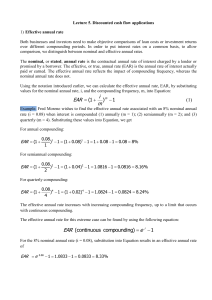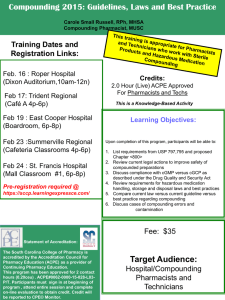Time Value of Money Practice Problems
advertisement
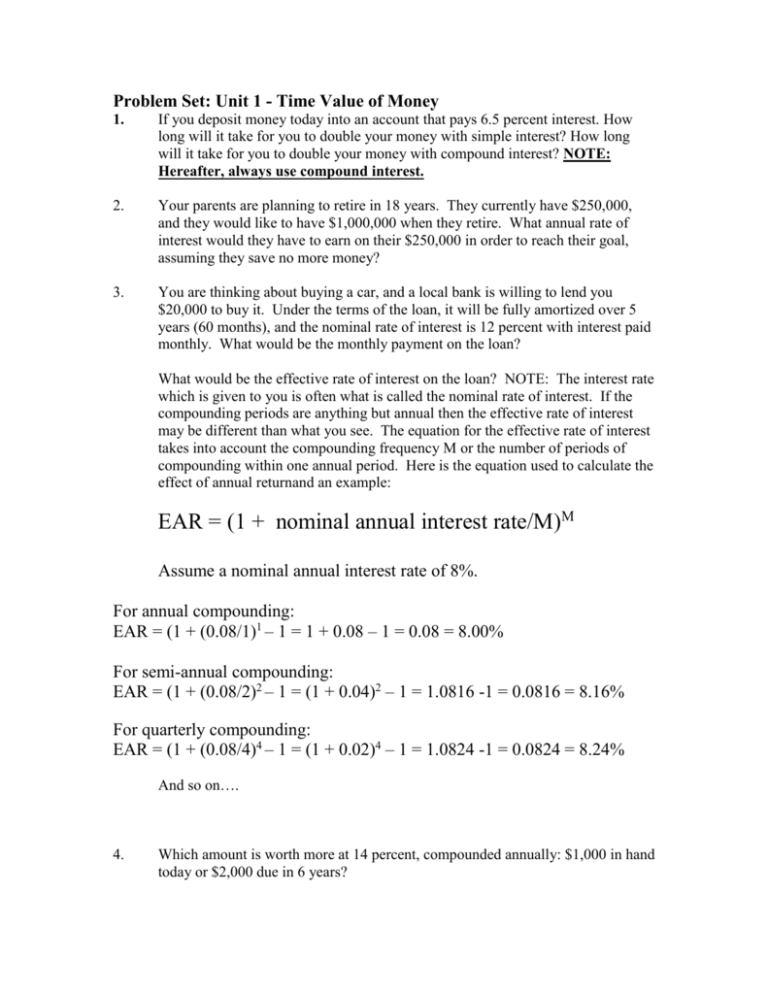
Problem Set: Unit 1 - Time Value of Money 1. If you deposit money today into an account that pays 6.5 percent interest. How long will it take for you to double your money with simple interest? How long will it take for you to double your money with compound interest? NOTE: Hereafter, always use compound interest. 2. Your parents are planning to retire in 18 years. They currently have $250,000, and they would like to have $1,000,000 when they retire. What annual rate of interest would they have to earn on their $250,000 in order to reach their goal, assuming they save no more money? 3. You are thinking about buying a car, and a local bank is willing to lend you $20,000 to buy it. Under the terms of the loan, it will be fully amortized over 5 years (60 months), and the nominal rate of interest is 12 percent with interest paid monthly. What would be the monthly payment on the loan? What would be the effective rate of interest on the loan? NOTE: The interest rate which is given to you is often what is called the nominal rate of interest. If the compounding periods are anything but annual then the effective rate of interest may be different than what you see. The equation for the effective rate of interest takes into account the compounding frequency M or the number of periods of compounding within one annual period. Here is the equation used to calculate the effect of annual returnand an example: EAR = (1 + nominal annual interest rate/M)M Assume a nominal annual interest rate of 8%. For annual compounding: EAR = (1 + (0.08/1)1 – 1 = 1 + 0.08 – 1 = 0.08 = 8.00% For semi-annual compounding: EAR = (1 + (0.08/2)2 – 1 = (1 + 0.04)2 – 1 = 1.0816 -1 = 0.0816 = 8.16% For quarterly compounding: EAR = (1 + (0.08/4)4 – 1 = (1 + 0.02)4 – 1 = 1.0824 -1 = 0.0824 = 8.24% And so on…. 4. Which amount is worth more at 14 percent, compounded annually: $1,000 in hand today or $2,000 due in 6 years? 5. Washington-Atlantic invests $4 million to clear a tract of land and to set out some young pine trees. The trees will mature in 10 years, at which time WashingtonAtlantic plans to sell the forest at an expected price of $8 million. What is the firm’s expected rate of return in investment? 6. While you were a student in college, you borrowed $12,000 in student loans at an interest rate of 9 percent, compounded annually. If you repay $1,500 per year, how long, to the nearest year, will it take you to repay the loan? 7. Your client is 40 years old and wants to begin saving for retirement. You advise the client to put $5,000 a year into the stock market. You estimate that the market’s return will be, on average, 12 percent a year. Assume the investment will be made at the end of each year. A) If the client follows your advice, how much will she have by age 65? B) How much will she have by age 70? 8. You are serving on a jury. A plaintiff is suing the city for injuries sustained after falling down a manhole. In the trial, doctors testified that it will be 5 years before the plaintiff is able to return to work. The jury has already decided in favor of the plaintiff. You are the foreman of the jury and propose that the jury give the plaintiff an award to cover the following items: 1) The present value of 2 years back pay ($34,000 in 1999 and $36,000 in 2000). Assume it is December 31, 2000 now, and that all salary is received at yearend. 2) The present value of 5 years of future salary (2001-2005). Assume the plaintiff’s salary would increase at a rate of 3 percent a year. 3) $100,000 for pain and suffering. 4) $20,000 for court costs. At a rate of 7 percent, what should be the size of the settlement?


